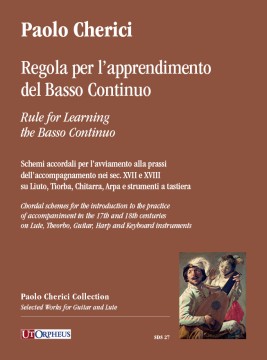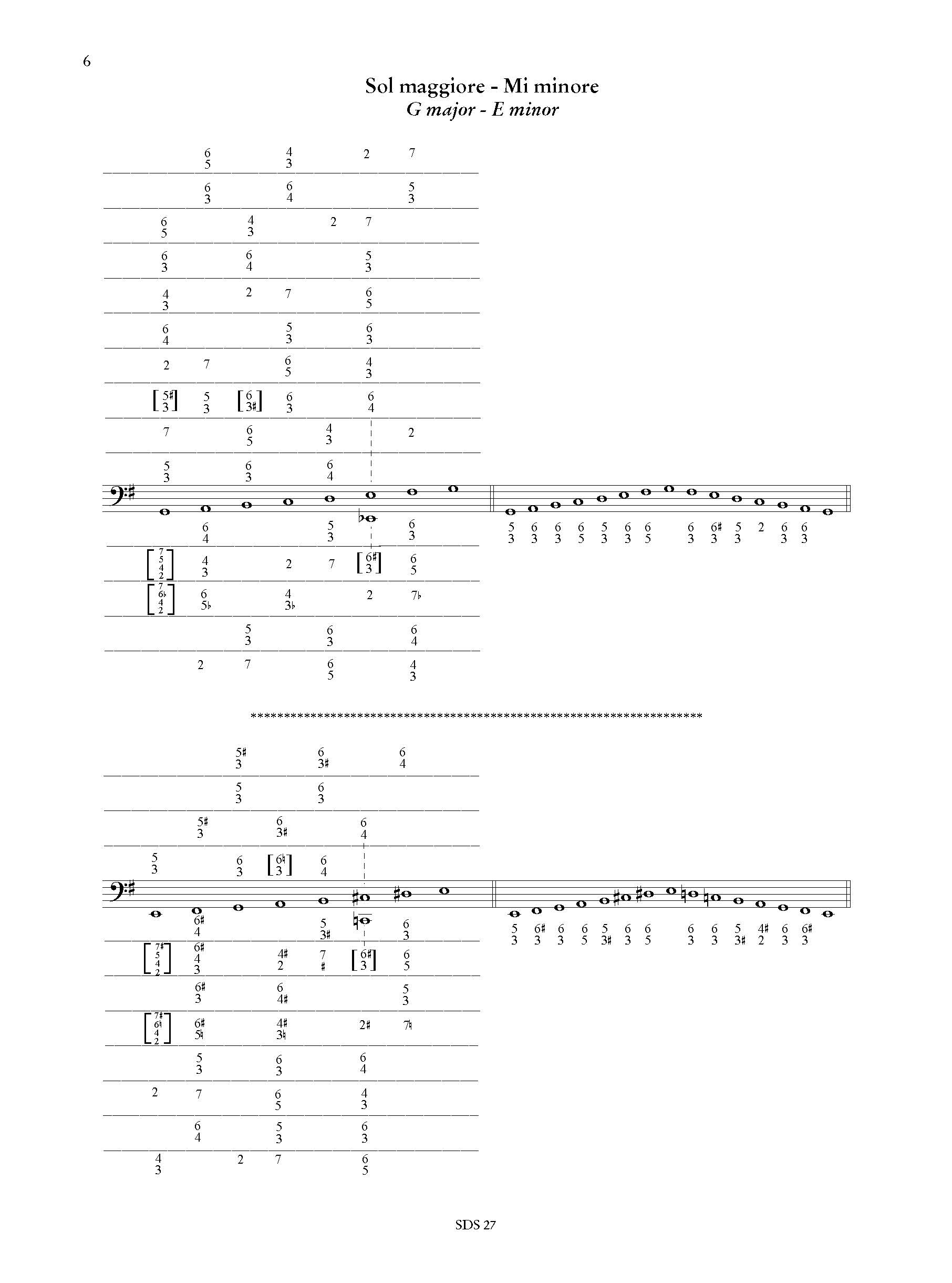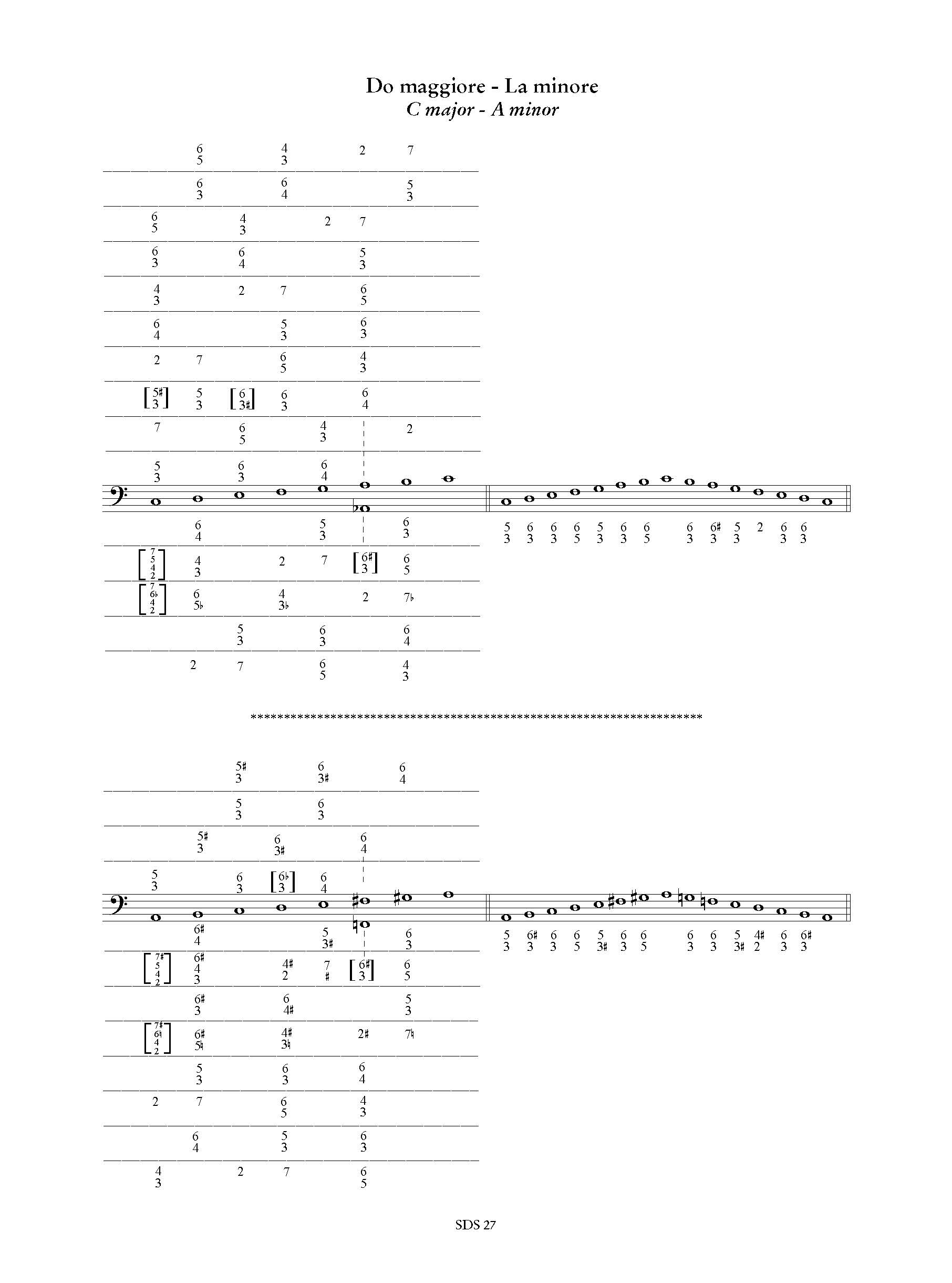Beschreibung
Paolo Cherici
Regola per l’apprendimento del Basso Continuo
Schemi accordali per l’avviamento alla prassi dell’accompagnamento nei sec. XVII e XVIII su Liuto, Tiorba, Chitarra, Arpa e strumenti a tastiera
Conceived in particular for lutenists and guitarists, but equally suitable for other instrumentalists interested in playing continuo such as keyboard players and harpists, this Rule for learning the basso continuo aims at providing a visual scheme in the form of a handbook able to set out in a complete way the chords of the eighteenth-century harmonic system in relation to the respective degrees of the major and minor scale. It does not satisfy the need to acquire the correct connections between the chords. For this, it is necessary to refer to the plentiful Baroque treatises on the subject.
When consulting the schemes, the following should be kept in mind:
- the lines drawn above and below the scale define the spaces within which the chords in the root position are inserted with their respective inversions, arranged on the corresponding steps of the scale;
- in the spaces above the stave, the chords belonging to the tonic and subdominant harmonic groups are shown, in those below, the chords relating to the dominant. However, some exceptions to this order will be noted due to reasons of graphic compilation (for example in the minor keys the chords of the II and IV degree are shown under the stave);
- the schemes lend themselves to a double reading: horizontal, within the space that shows the chord and its inversions allowing the immediate identification of the degrees on which they are used, and vertical, in the superimposition of the possible chords on each degree;
- the chords used in one or at most two positions are placed in square brackets (for example on the IV degree of the minor scale the Neapolitan third and sixth chord, or on the I and III degree of the major scale the augmented fifth chord) , inserting them for practical reasons in spaces related to other chords;
- keys up to five sharps and four flats have been included even if Baroque musical practice occasionally resorts to keys with too many key signature changes; however, there are sometimes modulating sections which require knowledge of obsolete positions;
- the overall scheme built on an ascending scale is followed by the ordinary ascending and descending scale with the harmonization model mostly used in the eighteenth century according to the so-called “rule of the octave”.
Paolo Cherici







